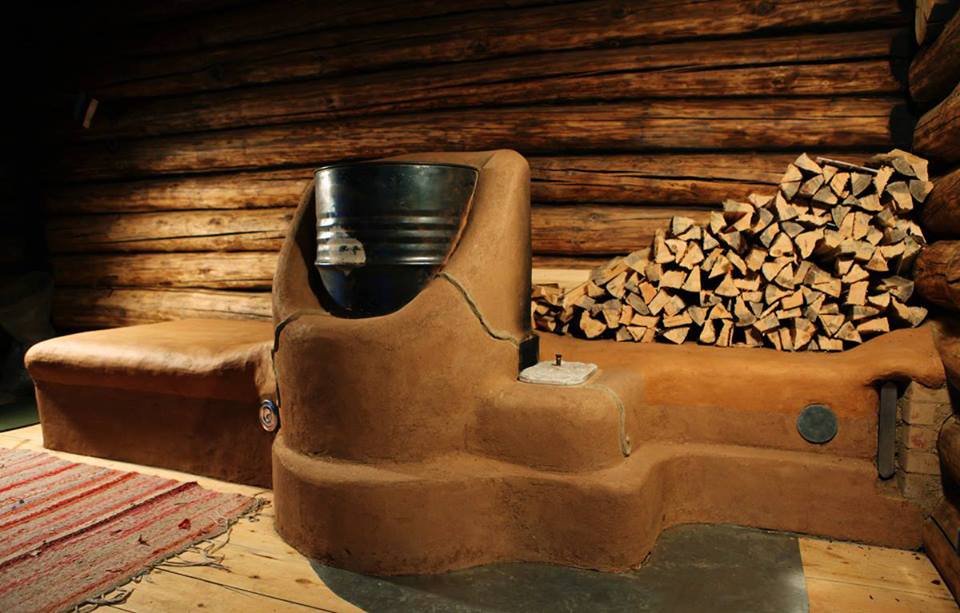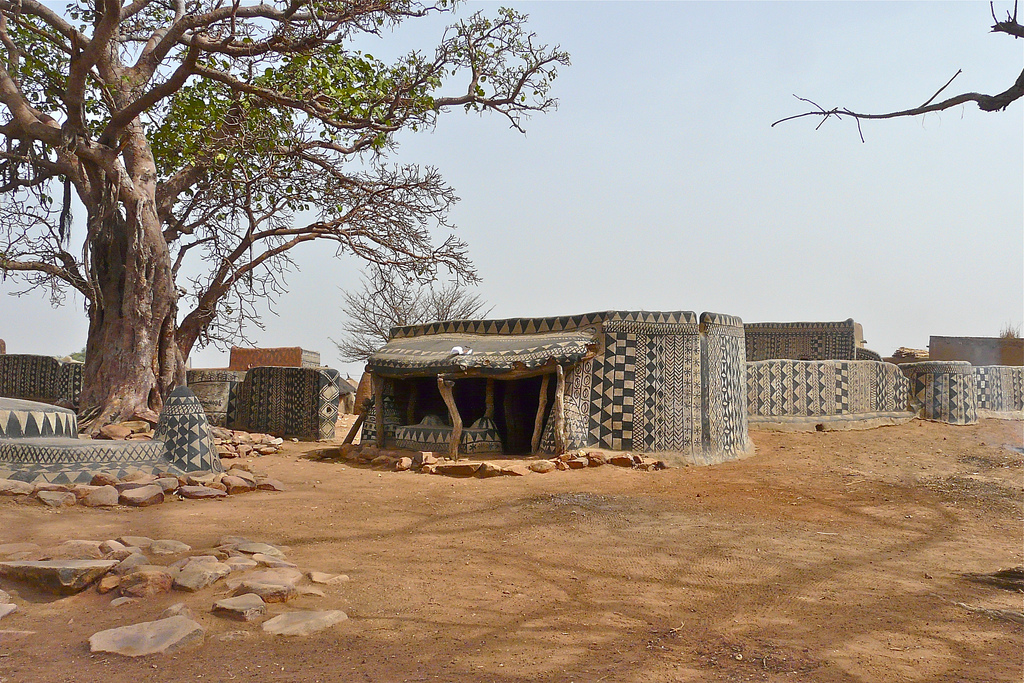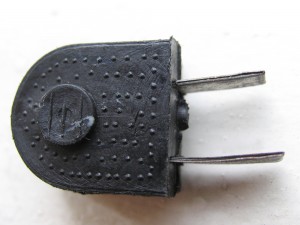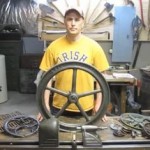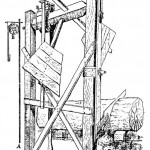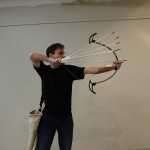A rocket stove is not quite as efficient and clean-burning as a masonry heater, but it is much more DIY-friendly to build. The idea is that the configuration allows excess oxygen to increase the burn temperature of the fire. Hotter temperature means you want to store the heat energy into a high thermal mass material. Lots of great links at I fucking love rocket stoves.
Foot Powered Sieve and Bandsaw
The Archanes Project, a natural building collective from Greece, shows two interesting designs for foot-powered machines: a sieve and a bandsaw.
“When George Chiletzakis told us that he wants to make a bandsaw, that will operate without electric power, at the beginning we all laughed. It seemed that this gave him bigger strength and inspiration to show us that he who laughs last, laughs best.”
Decorated Mud Houses in Burkina Faso
“In the south of Burkina Faso, a landlocked country in west Africa, near the border with Ghana lies a small, circular village of about 1.2 hectares, called Tiébélé. This is home of the Kassena people, one of the oldest ethnic groups that had settled in the territory of Burkina Faso in the 15th century. Tiébélé is known for their amazing traditional Gourounsi architecture and elaborately decorated walls of their homes.”
“Burkina Faso is a poor country, even by West African standards, and possibly the poorest in the world. But they are culturally rich, and decorating the walls of their buildings is an important part of their cultural legacy in this area of the country. Wall decorating is always a community project done by the women and it’s a very ancient practice that dates from the sixteenth century AD.”
Read more: Decorated Mud Houses of Tiébélé, Burkina Faso. Picture (and many more pictures): Rita Willaert.
Is Cuba the First Large-Scale Maker Society?
“When the U.S. left Cuba in the 1960s, it took most of the Cuba’s engineers with it. In their absence, Fidel Castro encouraged citizens to learn how to make their own stuff. So, they did. And, in the 70s, a culture of garage innovation was born from the revolutionaries, scientists, mechanics, and ordinary folk who formed the National Association of Innovators and Rationalizers (ANIR).”
See and read more. Thanks to Edwin Gardner.
On the picture: a home-made electric plug (Cuba), found at Architecture of Necessity.
Update: The book “Con nuestros propios esfuerzos” (“With our own effort”), released in 1991 by Verde Olivo, the publishing house of the Cuban Revolutionary Armed Forces, is available as a PDF. This 300-page long compendium describes and illustrates in technical detail a vast array of artificats, recipes, and survival strategies collected from all over the island by local authorities. Read more about it here (starting at page 4). Thanks to Michele.
Related: Contemporary Russian Folk Artifacts.
The Oil Drum (2005-2013)
The Oil Drum has published its last post. The archive remains accessible.
